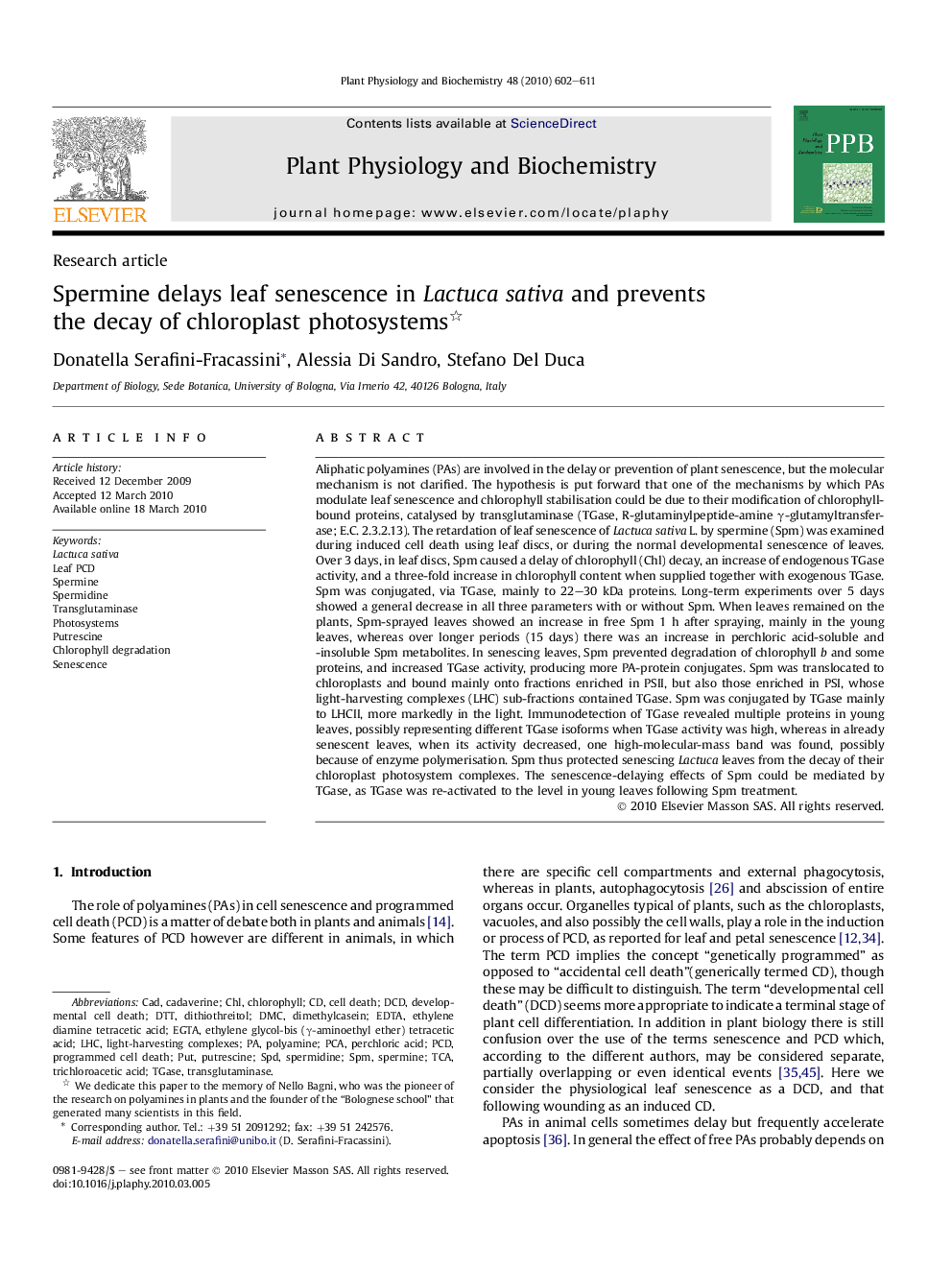| Article ID | Journal | Published Year | Pages | File Type |
|---|---|---|---|---|
| 2015376 | Plant Physiology and Biochemistry | 2010 | 10 Pages |
Aliphatic polyamines (PAs) are involved in the delay or prevention of plant senescence, but the molecular mechanism is not clarified. The hypothesis is put forward that one of the mechanisms by which PAs modulate leaf senescence and chlorophyll stabilisation could be due to their modification of chlorophyll-bound proteins, catalysed by transglutaminase (TGase, R-glutaminylpeptide-amine γ-glutamyltransferase; E.C. 2.3.2.13). The retardation of leaf senescence of Lactuca sativa L. by spermine (Spm) was examined during induced cell death using leaf discs, or during the normal developmental senescence of leaves. Over 3 days, in leaf discs, Spm caused a delay of chlorophyll (Chl) decay, an increase of endogenous TGase activity, and a three-fold increase in chlorophyll content when supplied together with exogenous TGase. Spm was conjugated, via TGase, mainly to 22–30 kDa proteins. Long-term experiments over 5 days showed a general decrease in all three parameters with or without Spm. When leaves remained on the plants, Spm-sprayed leaves showed an increase in free Spm 1 h after spraying, mainly in the young leaves, whereas over longer periods (15 days) there was an increase in perchloric acid-soluble and -insoluble Spm metabolites. In senescing leaves, Spm prevented degradation of chlorophyll b and some proteins, and increased TGase activity, producing more PA-protein conjugates. Spm was translocated to chloroplasts and bound mainly onto fractions enriched in PSII, but also those enriched in PSI, whose light-harvesting complexes (LHC) sub-fractions contained TGase. Spm was conjugated by TGase mainly to LHCII, more markedly in the light. Immunodetection of TGase revealed multiple proteins in young leaves, possibly representing different TGase isoforms when TGase activity was high, whereas in already senescent leaves, when its activity decreased, one high-molecular-mass band was found, possibly because of enzyme polymerisation. Spm thus protected senescing Lactuca leaves from the decay of their chloroplast photosystem complexes. The senescence-delaying effects of Spm could be mediated by TGase, as TGase was re-activated to the level in young leaves following Spm treatment.
